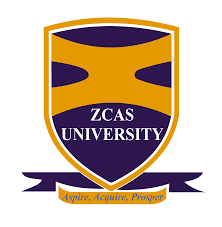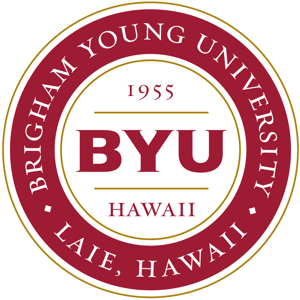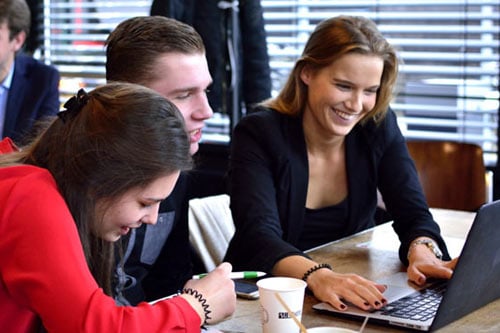Collaboration is part of the cultural DNA of academia. We share research, resources, people and ideas. This DNA creates a solid foundation for the sort of initiatives that evolve into Collaborative Online International Learning, or COIL for short. COIL is like the collaborations of old but with a twice, it is a top-down than the bottom up methods.
Theory and Practice of Collaboration in Higher Education
In theory, the academics of higher education keep themselves at the cutting edge of research and bring that knowledge and experience to their students in the classroom. In reality, many research focused academics are tasked with taking on some teaching and many teaching focused academics are asked to contribute in some way to the research of the university. The collaborative effort between universities and indeed across borders was traditionally focused on sharing for research purposes. This form of collaboration was informal by way of peer-to-peer sharing between researchers turned lecturers and vice versa who just knew each other and had collaborated previously but worked in different universities.
Universities and colleges also formalised these collaborations through partnerships. Collaborating for the sole purpose of teaching was not part of the agenda beyond exchange programs for students wanting to study abroad. Once abroad students would be fully immersed in the experience of studying at the partnered university of college. Collaboration between higher education institutions was always a top-down affair with the 'rules of engagement' being set by the institution and trickled down to the academic in the room with their students. This is still the case but things are changing.
Higher Education Collaboration in the 21st Century
The bulk of collaboration was therefore (and in many cases still is) formalised at the institutional level. However teaching and learning has become as borderless as sharing research proposals or data sets thanks to digital technology. Furthermore it has become a lot easier than relocating to a foreign country to learn from academics you do not know who are using methods that are completely unfamiliar to you. This shift creates opportunities for COIL that were previously too complex to administrate.
The technology making it possible to learn remotely has been around for a long time, however the academics who are willing and able to create learning experiences of equal value did not. As the growing demand for varied modes of learning meets the supply of innovative lecturers and professors there is a new equilibrium forming. Modern higher education academics have the entrepreneurial drive of the private sector with the pedagogical credentials to take control of the collaborative administration and the experiential learning of their students. While the willingness and ability of higher education to collaborate on teaching and learning more has increased, the willingness and ability of students to study abroad has declined.
There several factors pushing and pulling the new equilibrium:
- Tech savvy staff: Increase in the uptake of digital technology and upskilling of HE professionals post-pandemic
- Financial reasons: Cost of living crisis making relocation expensive for students and requiring academics to justify incomes and funding with greater added value.
- Socio-cultural reasons: Anxiety over traveling due to health and polarisation of society
COIL offers a solution to the obstacles students are facing while maximising the potential of the new breed of academics.
COIL With Business Simulations
We sat down and had a one to one conversation with Hans Van Der Heijden, professor of Accounting at University of Sussex Business School and PhD in Business management from Erasmus University Rotterdam, about COIL at University of Sussex. Student-led experiential learning is not something new at the University of Sussex. Professor of Strategy and International Business, Vasiliki Bamiatzi was already familiar with our Phone Ventures Simulation. Working with an existing partner University, the University of Mexico (UoM), the Business School at Sussex selected 80 of the 18k UoM Business school students to participate in Vasiliki's second year module as 'virtual exchange students' competing in the virtual markets of the simulation. Students from Mexico and the Sussex were blended together into teams that would compete with eachother in the business simulation with some students sharing the classrooms and some participating remotely, all in a learning mode that they were most comfortable in.
By centring the COIL project around Edumundo as an independent third party the joint learning environment could be shared for collaboration with ease. However before the safe and collaborative online learning environment is created it needs to be approved by academic institutions that, traditionally, hand down initiatives rather than receive them bottom up. Making the supply more affordable and convenient. The curriculum is more internationalised and the experiential learning of a business simulation is more internationalise which makes the simulation that much more like the real world of international business. On the demand side, students develop professional competencies and experiential learning through the business simulations and an international academic of a foreign university to add to their local institution and develop intercultural competencies. Our business simulations and teams are a perfect fit for COIL projects and we are always on the look out for more.
In the case of Sussex Business school the value of using our business simulations over years justified the case to offer the experience to students in partnered Universities. In other cases our business developers assist in gathering the requirements for a proposal to get similar projects off the ground. Once approved our operations team which are best-in-class at supporting teachers and implementing simulations to university and colleges. The rest is up to the new-school lecturers and their 21st century students to engage and the learning and up-skilling follows naturally and across borders.


.png?length=300&name=unnamed%20(11).png)
.png?length=300&name=unnamed%20(7).png)
.png?length=300&name=unnamed%20(8).png)
.png?length=300&name=unnamed%20(6).png)

.png?length=300&name=unnamed%20(10).png)
.png?length=300&name=unnamed%20(5).png)
.png?length=300&name=unnamed%20(9).png)
.png?length=300&name=unnamed%20(4).png)
.png?length=300&name=unnamed%20(2).png)
.png?length=300&name=unnamed%20(1).png)
.png?length=300&name=unnamed%20(3).png)
.jpg?length=300&name=unnamed%20(2).jpg)





.png?length=300&name=loughborough-university-logo%20(small).png)





